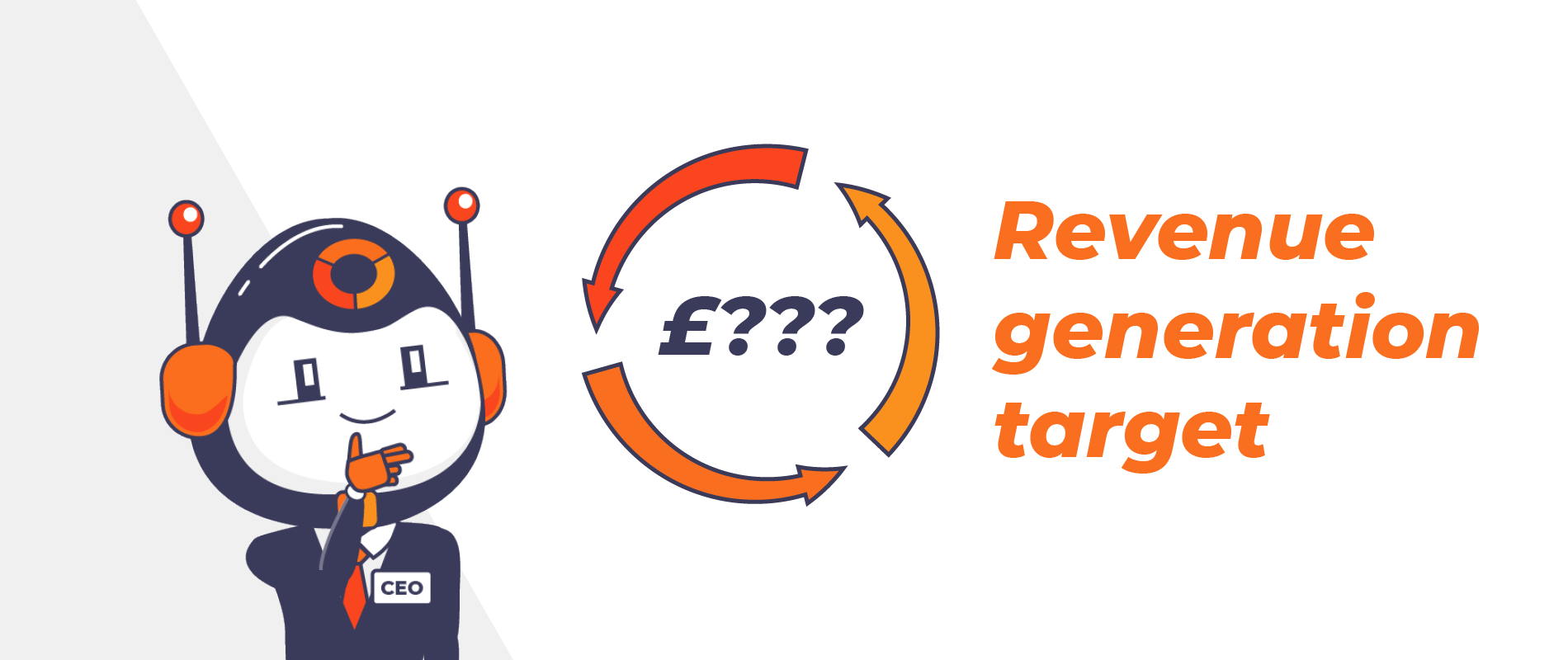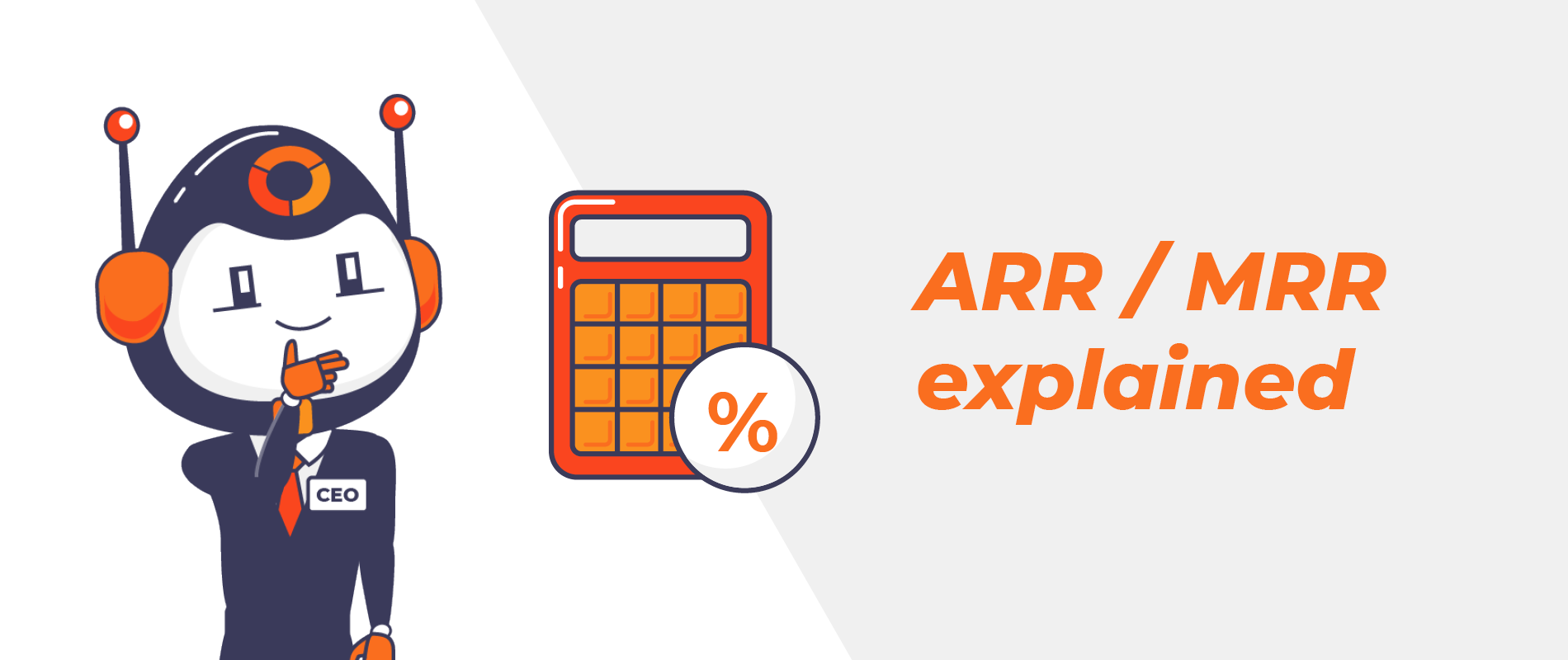
Get weekly
HubSpot updates
What is a revenue generation target?
As all business leaders know, an effective revenue strategy is fundamental to meet sustainable growth and profitability goals. But for that to happen, the strategy must be built around specific targets. This idea underlies the concept of revenue generation targets.
A basic definition for a revenue generation target is the desired revenue that your sales and marketing team need to deliver growth. Although there are several reasons why a business may fail to meet its revenue targets, in this article we’d like to draw attention to CEO involvement and setting data-driven metrics. The degree to which senior management is involved in this task is directly proportional to a company’s ability to meet or miss those targets.
However, we understand the time and resource limitations that CEOs face, so in this post we’d like to focus on the most impactful best practices to set targets that contribute to revenue growth.
Table of Contents
1. What KPIs affect your revenue growth
2. Be realistic about your customer retention rate
3. How to calculate your annual recurring revenue target
What KPIs affect your revenue growth?
In a previous post we discussed the concepts of ARR and MRR and how to calculate them. But the process of setting revenue generation targets involves other metrics. Here’s an overview of the most helpful KPIs that can help you set revenue generation goals and track new revenue opportunities.
-
Recurring Revenue Rate
This metric refers to the total revenue generated by a business through the sale of products and / or services that occur at regular intervals (as opposed to one-off sales). Some of the items that come under this metric include subscription or membership renewals, renewal of contracted services, contracted maintenance services, etc.
Businesses that provide this type of services can forecast the revenue they’ll generate with a high degree of certainty, whether it’s because they have long-term contracts in place or have built a loyal customer base.
As a result, Recurring Revenue Rate is a useful metric that can help you improve the accuracy of your future projections.
Depending on your business model, this KPI can be calculated on a weekly, monthly, quarterly, or annual basis, but Monthly Recurring Revenue (MRR) is the most common.
To calculate MRR, simply add up all recurring payments for the current month.
-
Average Revenue Per User
Average Revenue Per User (sometimes abbreviated to ARPU) defines the revenue each customer or user generates. This metric is useful for a number of reasons. Among other things, it can help you determine if your pricing model is profitable and get an accurate perspective on the financial effect of gaining and losing a customer.
To calculate your ARPU, divide your total revenue by the total number of customers or subscribers.
-
Cost of Goods Sold
Cost of Goods Sold or COGS is a metric that helps put revenue and profits into perspective, by taking into account the cost of producing your products and / or services. Like ARPU, COGS is a good indicator of the effectiveness of your pricing strategy and so it can play a crucial role in decision making and in improving your sales process.
COGS calculation varies depending on whether your business is service or product-oriented. Some of the factors to take into account include the direct costs involved in manufacturing, labour, equipment, materials, and delivery. A common formula is:
Beginning inventory + Purchases over accounting period – Ending inventory
In the service industry, COGS excludes the cost of materials and instead is calculated as cost of revenue.
-
Gross Profitability
Gross Profitability is a valuable indicator of your overall business success. Discovering your Gross Profitability allows you to understand the relationship between fixed costs (such as labour and production), pricing, and returns.
To calculate it, subtract net revenue from the cost of goods sold.
-
Customer Acquisition Cost
Customer Acquisition Cost or CAC is a marketing metric that helps understand the financial cost of customer conversion. As such, CAC is essential when it comes to optimising marketing efforts and advertising campaigns. You can find a more detailed explanation and examples in this blog post.
To calculate CAC, divide your marketing expenses by the number of new customers acquired during a given period.
You can even break down CAC over different marketing channels to see where your marketing and sales team should focus their efforts.
Be realistic about your customer retention rate
KPIs are essential, but they won’t help grow revenue unless they’re realistic. This is especially critical in customer retention, as the KPIs discussed above hinge on this factor directly or indirectly.
Retention rates are important from a cost and profitability perspective. It’s usually more profitable to retain customers than acquire new ones. A study suggests that improving customer retention rates by a mere 5% can result in ROI increases of 25-95%.
Higher customer retention rates can also bring added benefits, like loyalty and word-of-mouth referrals, which ultimately can impact your bottom line.
At this point we want to underscore once again the role CEOs play in bringing together different departments.
To set realistic KPIs and revenue generation targets, it’s crucial to ensure that all business activities are built around the smooth collaboration between marketers and your sales team.
Before deciding on a sales or marketing plan, encourage data-driven discussions around how each element of the plan can contribute to better customer retention. And speaking of data, we next need to draw attention to the steps needed to calculate your annual recurring revenue target.
How to calculate your annual recurring revenue target
To calculate your business’ potential for revenue generation, use the five metrics outlined above to get an accurate understanding where your company stands in terms of cost – benefit.
From that point you can set a realistic ARR target figure. Take the following as an example:
- A subscription-based business has an annual recurring revenue target of 25%
- A customer commits to a one-year subscription for the value of £10,000
- ARR for this specific customer would be £12,500 (£10,000 + 25%)
Now you can see why customer retention and acquisition need to be optimised in order to hit ARR targets. Our 1 Page SaaS Sales Planner has been created to help you identify and monitor most effective areas of opportunity to meet your revenue generation goals, which could be getting more website traffic, improving conversion rates, or shortening your sales cycle.
So what’s next?
Accurate and realistic revenue generation targets can make or break your overall business strategy. Throughout this article we have discussed the importance of taking an active role in defining revenue generation targets and of understanding the data behind business goal setting.
Because revenue generation is so central to business success and to profitable revenue models, we have creating a series of blog posts devoted to this concept and to how to best integrate in in your sales and marketing strategy.
The next blogs in this series will show you 3 ways to increase your recurring monthly revenue.
Further Reading
The benefits of HubSpot for SaaS Businesses
